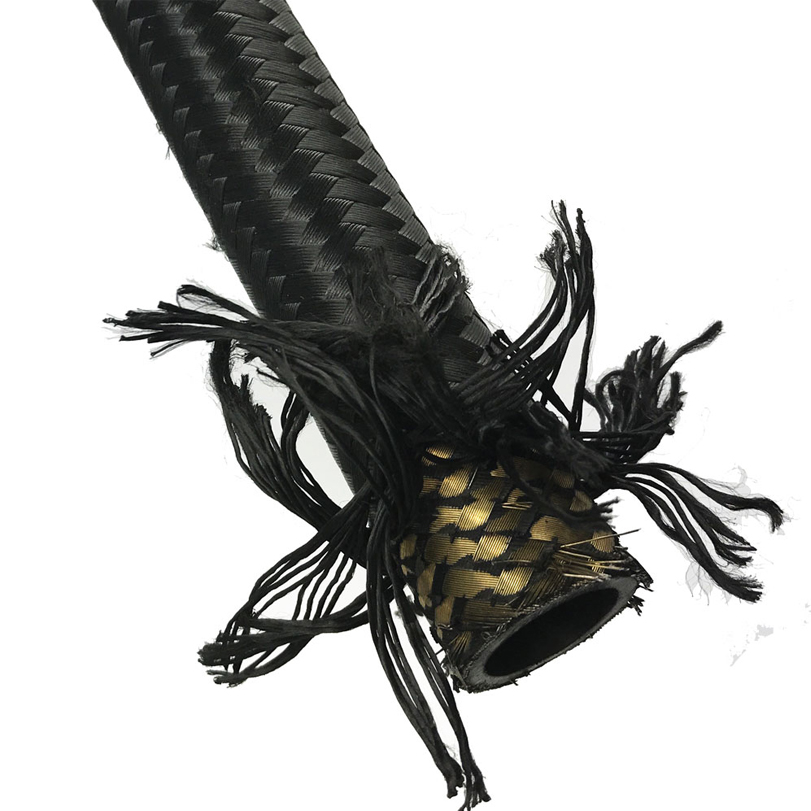335345435
Aug . 21, 2024 01:38 Back to list
OEM EN854 2TE Specifications and Applications for Industrial Hose Solutions
Understanding the OEM EN854 2TE Standard in Hose Manufacturing
In the realm of industrial hose manufacturing, standards play an integral role in ensuring product quality, safety, and performance. One such standard is the OEM EN854 2TE, a guideline that specifies the requirements for textile reinforced rubber hoses. This article aims to shed light on the significance of this standard and its applications in various industries.
What is EN854 2TE?
The EN854 2TE standard is part of the European Norm (EN) regulations, specifically designed for hydraulic and industrial hoses. The EN signifies its European origin, while 854 denotes the specific standard focusing on textile reinforced hoses. The 2TE indicates the construction type, which involves two textile spirals as reinforcement, making these hoses suitable for moderate pressure applications.
Key Features of OEM EN854 2TE
1. Construction Hoses adhering to the EN854 2TE standard are typically constructed with two layers of tensile textile reinforcement, which enhances their durability and flexibility. The outer rubber cover is made from materials that resist abrasion, weather, and UV exposure, making them suitable for outdoor applications.
2. Pressure Rating These hoses are designed to handle moderate pressures, usually ranging from 10 to 20 bar. This makes them ideal for various hydraulic applications where high-pressure hoses might not be necessary.
3. Temperature Resistance The materials used in the manufacturing of EN854 2TE hoses are capable of withstanding a range of temperatures, generally from -40°C to +100°C. This thermal resilience ensures their reliable performance in different environmental conditions.
4. Compatibility EN854 2TE hoses are compatible with a variety of fluids, including oils, fuels, and water-based solutions. This versatility makes them a popular choice across several sectors, such as agriculture, construction, and manufacturing.
Applications of OEM EN854 2TE Hoses
oem en854 2te

The versatility of EN854 2TE hoses allows for their broad use in numerous industries. For example
- Agriculture Farmers utilize these hoses for irrigation and transferring fluids essential for crop maintenance. Their flexibility and resistance to weather wear make them an excellent choice for outdoor use.
- Construction In construction sites, these hoses are employed for transferring hydraulic fluids and oil, often powering various machinery and equipment.
- Automotive The automotive industry also benefits from these hoses, particularly in applications where moderate pressure is essential. They are used in fuel delivery systems and cooling systems.
- Manufacturing Factories often require robust hose solutions for transporting materials and fluids in their processes, where EN854 2TE hoses provide an efficient and reliable option.
Quality Assurance and Safety
Using hoses that meet the OEM EN854 2TE standard significantly enhances safety and performance. Manufacturers who comply with this standard undergo rigorous testing to ensure that their products can withstand the stresses of industrial use without failing. This commitment to quality translates to reduced downtime and maintenance costs for businesses that depend on these hoses.
Conclusion
The OEM EN854 2TE standard represents a critical component in the landscape of hose manufacturing, providing specifications that guarantee durability, safety, and versatility. Its applications span across various industries, proving essential in tasks that require reliable fluid transport under moderate pressure. By adhering to this standard, manufacturers not only ensure compliance with safety regulations but also contribute to creating a safer and more efficient working environment. Understanding and utilizing the EN854 2TE standard is paramount for anyone involved in the selection and application of industrial hoses.
-
SAE 100 R17 Black Smooth Cover Hydraulic Hose
NewsMar.07,2025
-
SAE 100 R17 Black Smooth Cover Hydraulic Hose
NewsMar.07,2025
-
SAE 100 R17 Black Smooth Cover Hydraulic Hose
NewsMar.07,2025
-
SAE 100 R17 Black Smooth Cover Hydraulic Hose
NewsMar.07,2025
-
SAE 100 R17 Black Smooth Cover Hydraulic Hose
NewsMar.07,2025
-
steel wire braided hydraulic hose
NewsMar.07,2025



